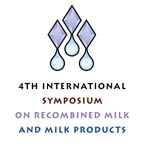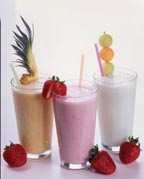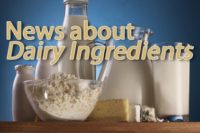
Efforts to push whey protein and milk minerals benefit from mounting scientific evidence linking high-protein, low-carbohydrate diets with weight loss, as well as milk mineral's contributions to reducing osteoporosis and obesity. Research shows that high-protein diets allow weight loss while maintaining bone and muscle mass. Milk minerals can help those following such diets (or those who simply don't care to drink traditional fluid milk products) avoid osteoporosis and other mineral deficiency conditions by offering the complete mineral package of a traditional dairy product for dairy and non-dairy beverage and food applications.
Whey proteins in the form of whey protein concentrate (WPC) and whey protein isolate (WPI) dry beverage mixes available at health food emporiums have long been considered by body builders to be essential tools for increasing muscle mass. Fitness and healthful lifestyle buffs now have alternatives in the RTD protein beverage and high-protein energy bar segments. The RTD nutritional beverage market is expanding from specialty health food stores to mainstream supermarkets. A flat market for high-margin powdered protein supplement mixes is more than offset by the growth of high-protein, low-carbohydrate RTD beverages.

The mid-range pH in the RTD beverage category faces the challenge of heat-sensitivity, particularly in whey protein beverages with high mineral content. Consumer research shows a preference for less acidic beverages, but technical hurdles including heat sensitivity, create a dearth of dairy protein-based RTD products in the pH 4-5 range. Such products require careful formulation and processing to avoid either precipitation or gelation. Research is under way to stabilize whey proteins' heat sensitivity for future innovation.
The majority of whey protein-fortified RTD beverages have a low pH. The segment easily incorporates WPCs and WPIs, particularly in heat-treated or mineral-fortified products
with up to 10% protein. Recent trends toward protein supplementation are driving use of WPC 80% and WPI 90%, particularly in the sports nutrition segment. The buffering ability of protein requires additional acid, which does cause products to have a more tart flavor profile.

Beyond protein, balanced mineral nutrition is required for overall health. New research shows bone brittleness can be caused by a lack of critical trace minerals found in milk and milk mineral powder, but not when common calcium fortifiers containing only calcium are added to products such as orange juice.
Milk minerals containing calcium, potassium, magnesium, zinc and other minerals are becoming more readily available. Such powders readily dissolve at pH 3.5, which offers application potential in the acidic segment of the sports drink category. Milk calcium is additionally suspended in neutral pH beverages, and remains stable during ultra temperature (UHT) processing.
Many consumers trying to push proteins or increase mineral intake do not even consider ingredients in the RTD beverage segment to be dairy-based. Instead they view such offerings individually as fruit smoothies or nutritional supplement beverages. The result? Opportunities abound to increase consumer dairy intake via the marketing of dairy powder products for recombining in RTD nutritional beverage categories.
